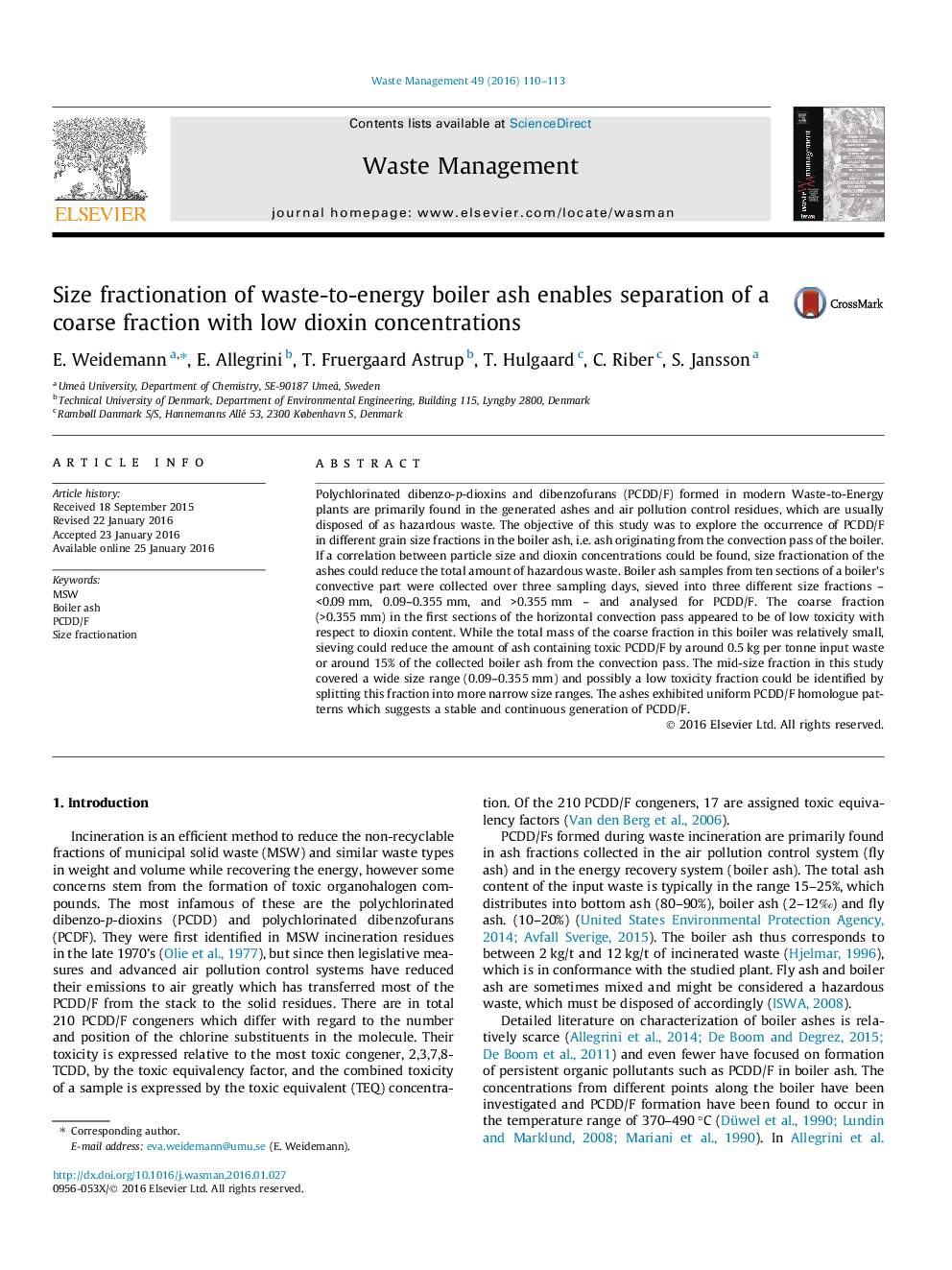| Article ID | Journal | Published Year | Pages | File Type |
|---|---|---|---|---|
| 6353754 | Waste Management | 2016 | 4 Pages |
Abstract
Polychlorinated dibenzo-p-dioxins and dibenzofurans (PCDD/F) formed in modern Waste-to-Energy plants are primarily found in the generated ashes and air pollution control residues, which are usually disposed of as hazardous waste. The objective of this study was to explore the occurrence of PCDD/F in different grain size fractions in the boiler ash, i.e. ash originating from the convection pass of the boiler. If a correlation between particle size and dioxin concentrations could be found, size fractionation of the ashes could reduce the total amount of hazardous waste. Boiler ash samples from ten sections of a boiler's convective part were collected over three sampling days, sieved into three different size fractions - <0.09Â mm, 0.09-0.355Â mm, and >0.355Â mm - and analysed for PCDD/F. The coarse fraction (>0.355Â mm) in the first sections of the horizontal convection pass appeared to be of low toxicity with respect to dioxin content. While the total mass of the coarse fraction in this boiler was relatively small, sieving could reduce the amount of ash containing toxic PCDD/F by around 0.5Â kg per tonne input waste or around 15% of the collected boiler ash from the convection pass. The mid-size fraction in this study covered a wide size range (0.09-0.355Â mm) and possibly a low toxicity fraction could be identified by splitting this fraction into more narrow size ranges. The ashes exhibited uniform PCDD/F homologue patterns which suggests a stable and continuous generation of PCDD/F.
Related Topics
Physical Sciences and Engineering
Earth and Planetary Sciences
Geotechnical Engineering and Engineering Geology
Authors
E. Weidemann, E. Allegrini, T. Fruergaard Astrup, T. Hulgaard, C. Riber, S. Jansson,
